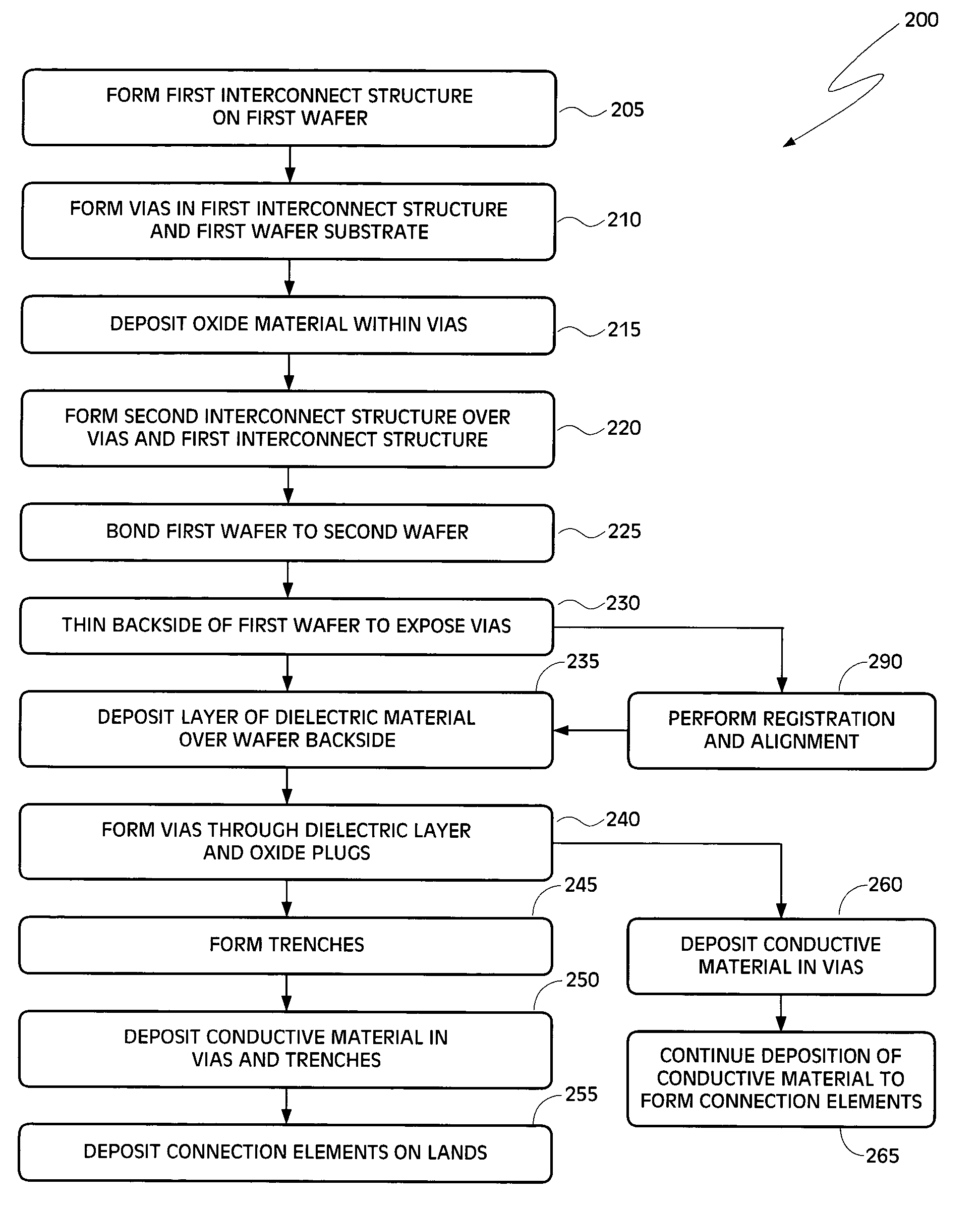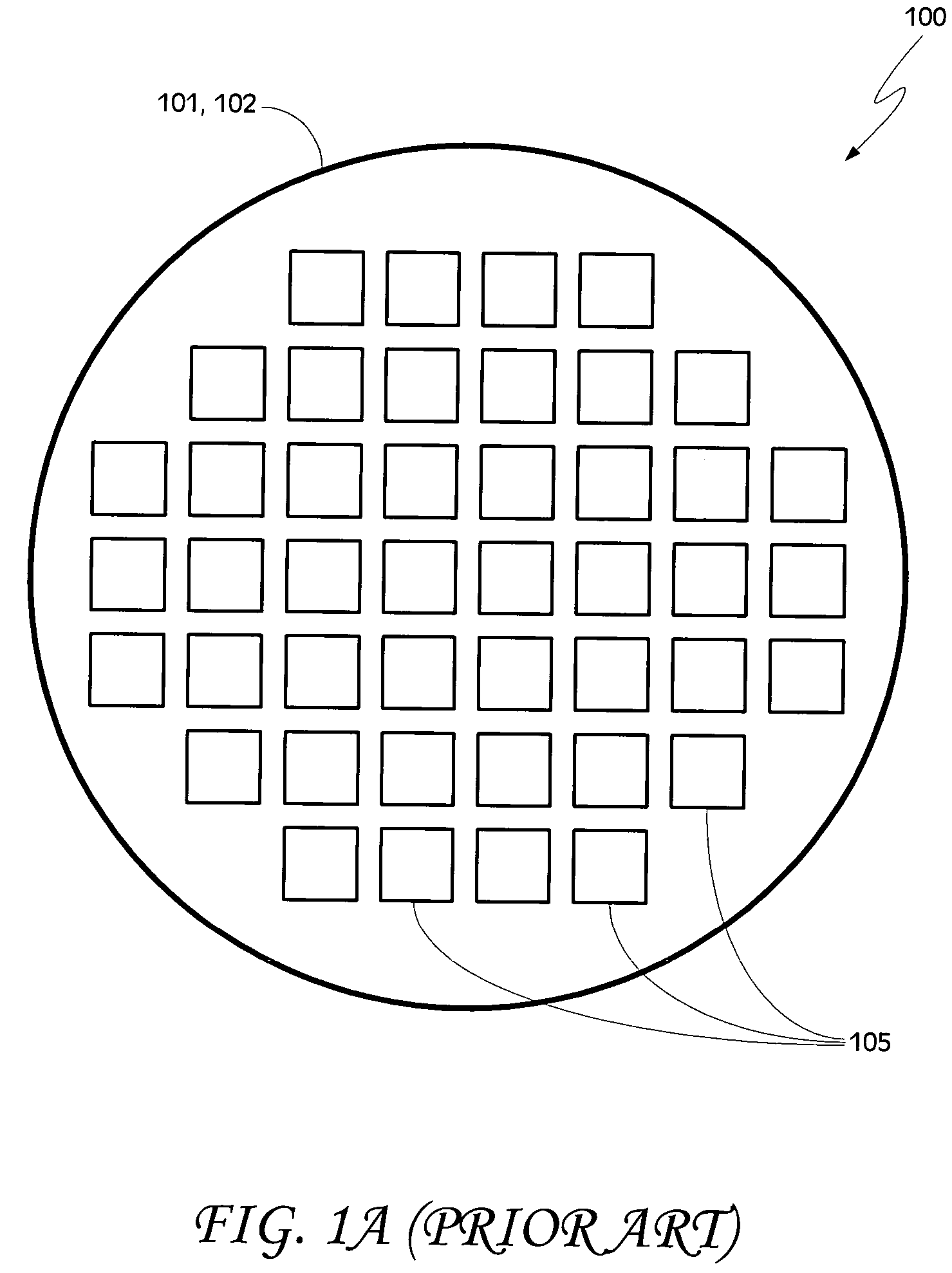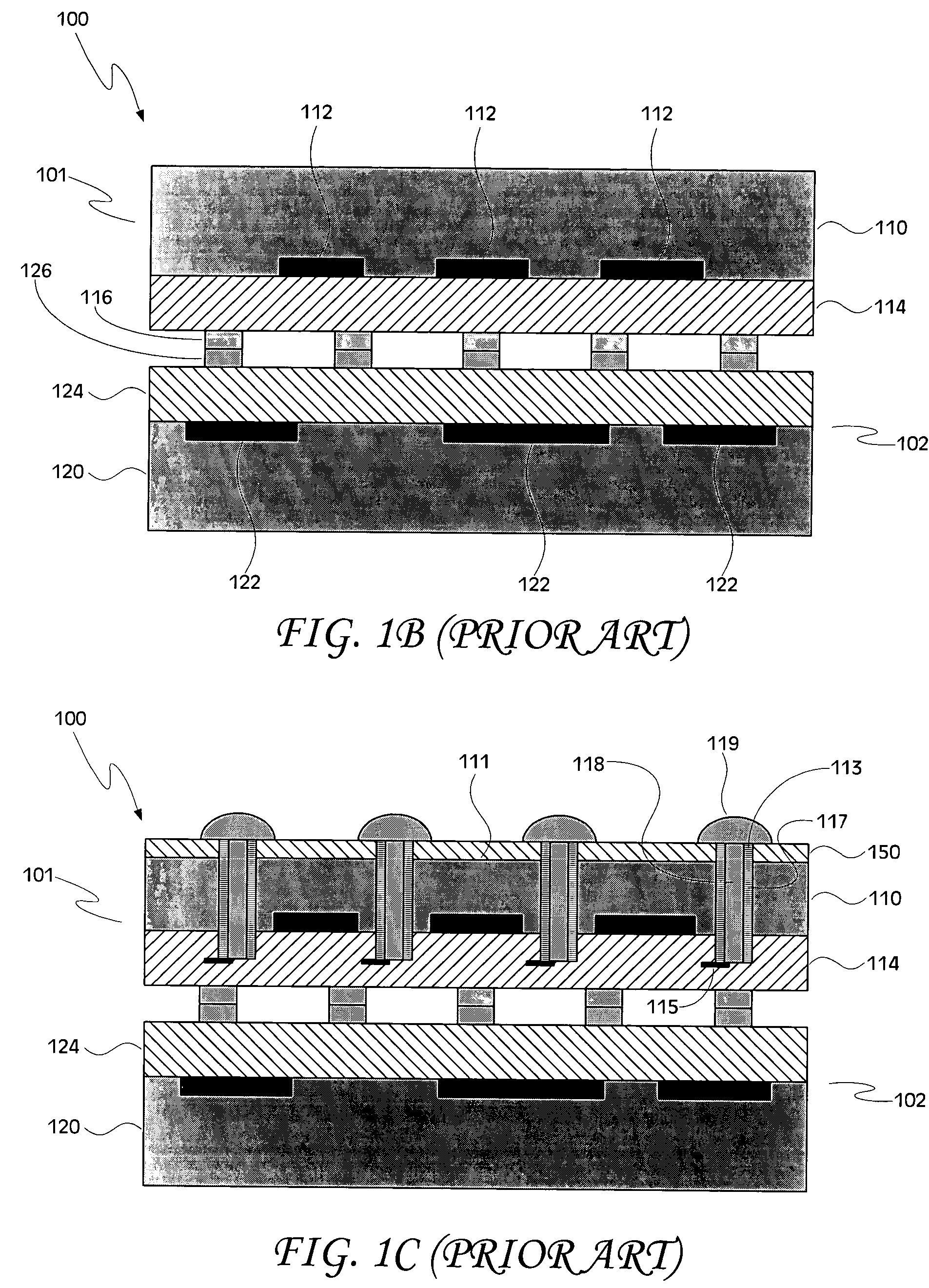Methods of forming backside connections on a wafer stack
a backside connection and stack technology, applied in the field of wafer bonding, can solve the problems of poor electrical connection formation, negative affecting device performance, and reducing production yields
- Summary
- Abstract
- Description
- Claims
- Application Information
AI Technical Summary
Problems solved by technology
Method used
Image
Examples
Embodiment Construction
[0016] Disclosed are embodiments of a method of forming backside connections on a wafer stack. In the disclosed embodiments, vias for backside connections are formed from a wafer's front side prior to bonding with a second wafer, and misalignment of the vias resulting from an inability to achieve adequate registration between features formed on opposing sides of the wafer is, therefore, minimized. Various embodiments of this method of forming backside connections on a wafer stack are disclosed in the block diagrams of FIGS. 2, 4A-4B and 6A-6B, respectively.
[0017] Turning now specifically to FIG. 2, illustrated is an embodiment of a method 200 of forming backside connections on a wafer stack. The embodiments of the method 200 shown in FIG. 2 are further illustrated in the schematic diagrams of FIGS. 3A through 3M, and reference should be made to these figures as called out in the text.
[0018] Referring initially to FIGS. 3A and 3B, a first wafer 301 is illustrated. A plan view of th...
PUM
 Login to View More
Login to View More Abstract
Description
Claims
Application Information
 Login to View More
Login to View More - R&D
- Intellectual Property
- Life Sciences
- Materials
- Tech Scout
- Unparalleled Data Quality
- Higher Quality Content
- 60% Fewer Hallucinations
Browse by: Latest US Patents, China's latest patents, Technical Efficacy Thesaurus, Application Domain, Technology Topic, Popular Technical Reports.
© 2025 PatSnap. All rights reserved.Legal|Privacy policy|Modern Slavery Act Transparency Statement|Sitemap|About US| Contact US: help@patsnap.com



